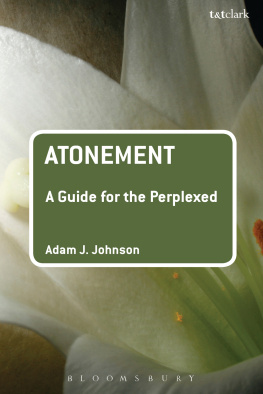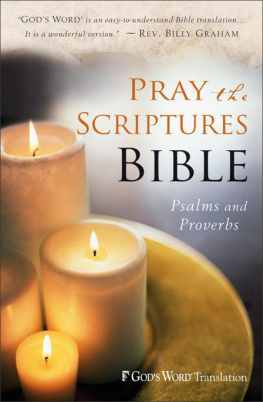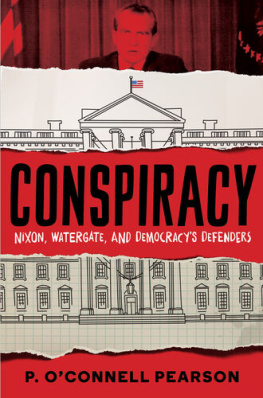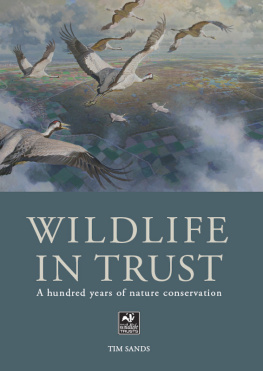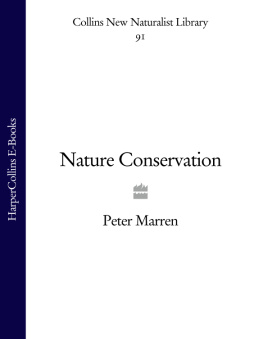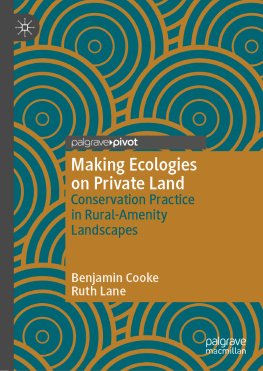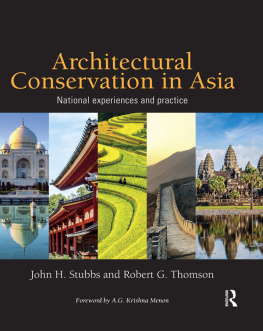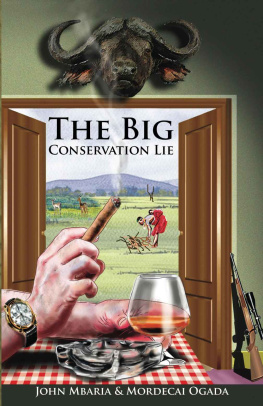Johnson - Escaping the dark, gray city fear and hope in Progressive-era conservation
Here you can read online Johnson - Escaping the dark, gray city fear and hope in Progressive-era conservation full text of the book (entire story) in english for free. Download pdf and epub, get meaning, cover and reviews about this ebook. City: United States;USA, year: 2017, publisher: Yale University Press, genre: Politics. Description of the work, (preface) as well as reviews are available. Best literature library LitArk.com created for fans of good reading and offers a wide selection of genres:
Romance novel
Science fiction
Adventure
Detective
Science
History
Home and family
Prose
Art
Politics
Computer
Non-fiction
Religion
Business
Children
Humor
Choose a favorite category and find really read worthwhile books. Enjoy immersion in the world of imagination, feel the emotions of the characters or learn something new for yourself, make an fascinating discovery.

- Book:Escaping the dark, gray city fear and hope in Progressive-era conservation
- Author:
- Publisher:Yale University Press
- Genre:
- Year:2017
- City:United States;USA
- Rating:5 / 5
- Favourites:Add to favourites
- Your mark:
- 100
- 1
- 2
- 3
- 4
- 5
Escaping the dark, gray city fear and hope in Progressive-era conservation: summary, description and annotation
We offer to read an annotation, description, summary or preface (depends on what the author of the book "Escaping the dark, gray city fear and hope in Progressive-era conservation" wrote himself). If you haven't found the necessary information about the book — write in the comments, we will try to find it.
Escaping the dark, gray city fear and hope in Progressive-era conservation — read online for free the complete book (whole text) full work
Below is the text of the book, divided by pages. System saving the place of the last page read, allows you to conveniently read the book "Escaping the dark, gray city fear and hope in Progressive-era conservation" online for free, without having to search again every time where you left off. Put a bookmark, and you can go to the page where you finished reading at any time.
Font size:
Interval:
Bookmark:
Escaping the Dark, Gray City
Fear and Hope in Progressive-Era Conservation
BENJAMIN HEBER JOHNSON

Published with assistance from the income of the
Frederick John Kingsbury Memorial Fund, and from the
foundation established in memory of Amasa Stone Mather of
the Class of 1907, Yale College.
Copyright 2017 by Benjamin Heber Johnson. All rights reserved.
This book may not be reproduced, in whole or in part,
including illustrations, in any form (beyond that copying
permitted by Sections 107 and 108 of the U.S. Copyright Law
and except by reviewers for the public press), without written
permission from the publishers.
Yale University Press books may be purchased in quantity for
educational, business, or promotional use. For information,
please e-mail sales.press@yale.edu (U.S. office) or
sales@yaleup.co.uk (U.K. office).
Set in Minion type by Integrated Publishing Solutions,
Grand Rapids, Michigan.
Printed in the United States of America.
ISBN 978-0-300-11550-5
Library of Congress Control Number: 2016949701
A catalogue record for this book is available from the British Library.
This paper meets the requirements of ansi/niso Z39.481992 (Permanence of Paper).
10 9 8 7 6 5 4 3 2 1
For Michelle and Tobias
The extraordinary intelligence of human beings can seduce us into thinking that we are the sole architects of our history, with the rest of the worldplants, animals, weather, geographysimply the props and stage on which we enact our dramas. The premise of environmental history is that this larger world is also an actor in human stories. Most of the time, the dialogue between humans and the world in which they live is a hushed murmur, a conversation whose echoes we can make out only much later: farmers chose to plant the seeds from a grass with the largest heads, and a thousand years later developed corn. Or Europeans bring with them to the Americas diseases that allow for their multiplication and expansion, the unexpected product of past animal domestications and the easy spread of plants and pathogens across the Eurasian land mass.
At other moments, however, the background hum reaches a crescendo that itself becomes the subject of thought, comment, and perhaps action: the last passenger pigeon dies, a scientist discovers that the chemicals propelling hair spray and other conveniences are also destroying the ozone layer, or a hurricane brings exceptional flooding that strikes many as a harbinger of a warmer planet.
One such extended moment occurred at the beginning of the twentieth century in the United States. Influential scientists, writers, political leaders, and a large portion of the general population became convinced that humanity had lost its proper place in the larger world. Americans, they believed, were destroying species, overconsuming natural resources, and moving to homes and cities that isolated them from natural beauty and wildness. These women and men sought to restore a spiritually renewing and materially sustainable relationship with a nature made vulnerable by the unprecedented power of industrial humanity. Eventually adopting the term conservation to describe their efforts, they tried to do this by passing laws regulating such things as hunting and logging, turning over larger portions of the country to the management of foresters and other scientists, creating cities and buildings that evoked rather than denied nature, and replacing obliviousness and profligacy with understanding and responsibility. They sought to create both a culture that fostered appreciation, awareness, and restraint when it came to the natural world, and a vigorous state to enforce the dictates of that culture.
The prominence of conservation in the early-twentieth-century United States is widely known: elected officials such as President Theodore Roosevelt and environmental writers and activists such as John Muir appear in history textbooks and have spawned numerous studies by professional historians, journalists, and environmental enthusiasts. Those wishing to expand their knowledge of conservation can consult numerous biographies of its leading lights as well as studies of particular agencies and protected areas, of the concept of wilderness, and of the impact of conservation on rural people. So why write another book on the subject?
Escaping the Dark, Gray City grew from two mounting frustrations: with the ways that environmental historians write about conservation, and with how little other historians of the period write about it. Before the late 1990s, scholars and journalists examining conservation and conservationists generally wrote with the assumption that their subjects were virtuous, and that their task was to trace the emergence and accomplishments of environmental enlightenment and the grave ecological crises that this enlightenment sought to combat. This approach colored accounts of wilderness thought, of the careers of such figures as Gifford Pinchot and John Muir, of the establishment of national parks and other protected areas, and of organizations such as the Sierra Club
My plans were derailed, for the study of conservation went through a dramatic transformation. In the 1990s, a growing number of scholars asked skeptical questions about conservation and environmentalism. What did it mean to call a place a wilderness when it had been home so long to human beings whose hunting, fires, and crops had shaped the landscape now valued for its supposed isolation from the social world? Could appreciation of the wild lead people to ignore or even denigrate the more quotidian nature of their backyard, neighborhood, and city? What happened to the hunting, fishing, and gathering of people living in and around the new national parks and forests? Why did establishing a park or forest so often result in the removal of Indian people and the criminalization of their ways of living off the land? Given the sometimes disastrous consequences of the fire suppression and predator extermination that conservationists pursued with such vigor, were the purported saviors not sometimes as destructive as those whose environmental profligacy they so roundly condemned?
I embraced this turn to a more critical history and contributed modestly to it with an article about how conservation restrictions in Minnesota had subordinated Indians and immigrant miners by depriving them of access to natural resources. My enthusiasm for the study of conservation had not waned, I told myself, but rather matured. To regulate nature was to regulate society, I now saw, and this had often been done unjustly. Conservations importance lay in its failures and blindness as well as its accomplishments. These kinds of histories were not so inspiring to read on a backpacking or canoe trip, but they spoke powerfully to the sense of disfranchisement palpable in the old mining-turned-tourist towns that I had come to know and love. These revisionist stories angered some environmentalists and environmental historians, but I saw in my own classes how they did a valuable service by forcing environmentally minded people to think about what had been done in the name of protecting nature, to leaven their environmentalism with a concern for social justice.
But after a few years, I became increasingly uncomfortable with the consequences of narrating the history of conservation by focusing on its sins. A comment from one of my less environmentally minded students brought this home: at the end of a class session in which we discussed the dispossession of Indians and rural whites by conservation bureaucracies, he shrugged his shoulders and said, This just sounds like the kind of bullshit that goes down when the government does anything. I shuddered: was this my lesson to my students, to bolster their already robust cynicism about the wisdom of the American public using the powers of its government to limit environmental damage? Would we be better off without the game laws, the protected areas, and the myriad ways that conservationists had pushed Americans to think about nature? I had helped my students see the limits, oversights, and even crimes of conservation. I wanted them to see its accomplishments, too, so that the critical histories would inform a contemporary politics that melded environmental protection with social justice. Indeed, in a time when humanity faces the extraordinary challenge of global climate change, I thought that this synthesis was one of the duties of environmental history.
Next pageFont size:
Interval:
Bookmark:
Similar books «Escaping the dark, gray city fear and hope in Progressive-era conservation»
Look at similar books to Escaping the dark, gray city fear and hope in Progressive-era conservation. We have selected literature similar in name and meaning in the hope of providing readers with more options to find new, interesting, not yet read works.
Discussion, reviews of the book Escaping the dark, gray city fear and hope in Progressive-era conservation and just readers' own opinions. Leave your comments, write what you think about the work, its meaning or the main characters. Specify what exactly you liked and what you didn't like, and why you think so.




